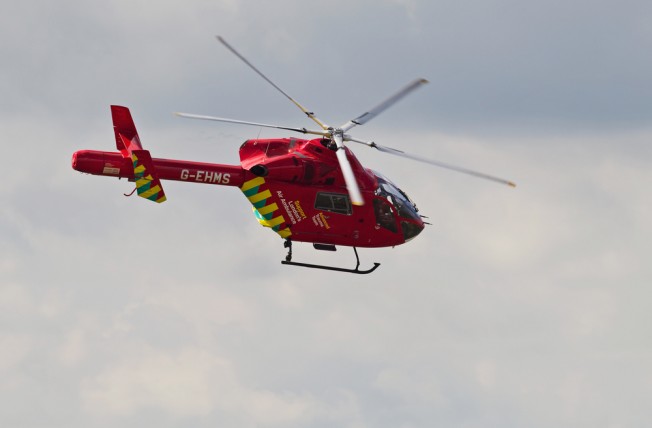Few medical conditions require such acute treatment as stroke – “time is brain”, say doctors, as every minute lost may lead to permanent neurological damage.
Moreover the breakthrough therapies of the past two decades such as thrombolysis, known as clot-busting drugs, are only effective if used within a four-and-a-half-hour window of the incident. Any delay in assessment or treatment can risk allowing damage in the brain to spread, leading to a poor initial prognosis and a much greater risk of permanent physical disability.
No wonder then that stroke specialists are exploring faster and better ways to improve initial diagnosis, care and treatment.
Probably the best-known newer intervention is a clot-grabbing device. These are effectively retrievable stents, inserted through the artery in the groin and directed all the way up through the neck to the clot which caused the stroke. Surgeons use the stent like a basket to collect the clot, which may already have been weakened using thrombolysis, and pull it out.
Sanjeev Nayak, consultant neuroradiologist at University Hospitals of North Staffordshire NHS Trust, explains: “In patients with large occlusions of the major vessel in the brain, which causes serious strokes, if you don’t get the clot out, there is a 50 per cent chance of death or destruction of brain tissue.”
Initial research using embryonic stem cells in mice and rats one week after a stroke resulted in the animals regaining strength in their limbs
Dr Nayak is encouraged by new results that show the clot-grabbing devices to be good value for money as well as efficacious. Data presented at the International Stroke Congress in Nashville, Tennessee, in February demonstrated that use of one particular device nearly doubled the rate of good neurological outcomes (71 per cent as opposed to 40 per cent) compared with standard-of-care treatment alone, within its study.
Looking into the future, Keith Muir, SINAPSE professor of clinical imaging and consultant neurologist at the University of Glasgow, confirms there is promising work underway, much of it in radiography.
“For example, brain perfusion imaging looks at the blood-flow patterns in the brain,” he explains. “We see where the blood is moving in the brain and use that information to decide on how to tackle the clot. We’re asking do you simply inject the drug into everyone or do we gain more by scanning first and seeing if some people don’t require treatment?”
A Stanford University, California team are exploring if embryonic stem cells could carry out repair work. Initial research using these cells in mice and rats one week after a stroke resulted in the animals regaining strength in their limbs.
Meanwhile, British researchers have been looking into brain cooling. A paper published in the journal Stroke last October, by a team from the Institute for Women’s Health, University College London, showed that cooling to 35C (an absolute drop of 3.5C) provided protection in most brain regions after a stroke, although overcooling (an 8.5C drop) was detrimental.
Other therapies under study include the use of ultrasound and microscopic air bubbles introduced intravenously to break up clots, plus work in Melbourne, Australia on the intravenous introduction of magnetic particles as a way of targeting the clot’s location to improve delivery of thrombolysis.
In Glasgow, Professor Muir is involved in trials delivering a special oxygen-carrying chemical, a perfluorocarbon or PFC, at the same time as a scan to see which parts of brain tissue are still able to absorb the oxygen. Moreover, it’s a way of delivering oxygen straight to tissue where there blood supply has been interrupted and keeping it alive.

The Air Ambulance is being used to speed up patience admittance
However, not all strokes are caused by clotting. Professor Muir says: “In the case of a stroke caused by a bleed – an intra-cerebral haemorrhage – we sometimes carry out brain surgery which can cause trauma to otherwise healthy tissue. Now there’s a promising new method where a small tube is inserted into the clotted area of fresh blood to allow thrombolysing drugs to be administered directly, allowing the blood to be sucked out with less trauma to surrounding tissue.”
Pharmaceutical research is still focusing on improving clot-busting drugs and trying them in different combinations. Meanwhile, some hospitals are using telemedicine and remote diagnosis with success. But, Professor Muir warns, access to a video camera in a remote location “doesn’t mean you have a stroke service – you still need to get patients to hospital to begin treatment”.
In south London, St George’s Hospital, Tooting has begun using the Kent, Surrey and Sussex Air Ambulance to speed up patient admittance by up to an hour.
But perhaps the most interesting work underway is the WAKEUP trial, funded by the European Union, which is trying to determine most precisely when the stroke took place. “One in four strokes happen at night and we can’t tell when the acute episode occurred, so we can’t use thrombolysing drugs,” says Professor Muir. “This trial could mean opening the doors to treat many more patients.”

